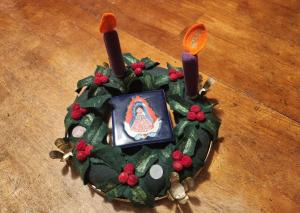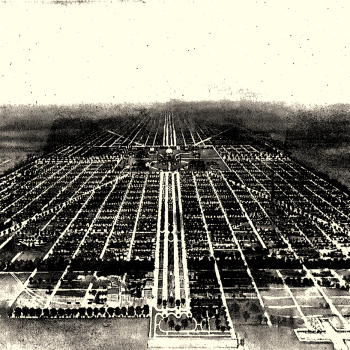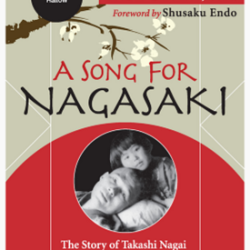I have been struggling lately. Grief that generally rests quietly in my heart has been swelling up at unexpected, inauspicious moments. It began at the end of Divine Liturgy on the third Sunday in November. Sorrow had filled my heart that morning, though I wasn’t sure why. When our priest came out to name those whose anniversary of “falling asleep in the Lord” occurred in November, I stiffened. Glancing in my direction, he mentioned Ana Verónica, the daughter I lost in utero four years ago. As he was yet speaking, I felt my 10-year-old entwine her fingers with mine and lean against me as if to protect me from the deluge of emotion that she knew would arise at her sister’s mention. Together, we walked to the side of the church to chant the prayers for the dead, lit candles in hand, though I could barely see through my tears, as grief, intensified by the unexpected reminder of my loss, enveloped me.
Responses to losing a child in the womb are as unique as the people who experience the loss. For those who respond with sorrow, it can be tricky, for how do you grieve someone you’ve never seen or held, and with whom the most poignant shared memory may be the traumatic moment of loss? Like many families who have experienced miscarriage, my family has developed particular rituals of grief and remembrance. When we decorate for Christmas, for example, we hang a little, misshapen felt stocking for Ana Verónica at the end of the line. Her stocking faces ours, because whereas we are marching towards Heaven, she looks down at us from above. Putting up the stocking every year is painful, but to love is to feel pain. Did not Christ give us the ultimate example?
When we set up the children’s felt Advent wreath, we place in the center a little blue box I bought in Mexico years before I married and became a mother. Decorated with an image of la Guadalupana, it contains Ana Verónica’s remains, another reminder of her presence. And in July, on the day that she was due to be born, the kids insist on baking cupcakes and singing Las Mañanitas (a traditional Mexican birthday song) to their sister. She is very much with us.
Curious about historical responses to miscarriage, especially those tied to faith (which in ancient cultures was largely embedded into the culture) – and wondering if I might stumble upon alternative ways to remember – I decided to investigate.
What I discovered (in my admittedly limited research) was a lot of information about pregnancy, childbirth, the prevalence of miscarriage, and its use as grounds for divorce or abandonment, but limited examples of responses to pregnancy loss or rituals of remembrance. Here are two:
In 1907, archeologists with the British School for Archaeology excavated a tiny coffin, dating to around 664-525 BC, in Giza. The cedar wood structure, only seventeen inches long, contains the only academically-verified embalmed and buried human remains of only sixteen to eighteen weeks of gestation. The carefully carved miniature of an ancient Egyptian coffin indicated to curators at the Fitzwilliam Museum – into whose collections the tiny box arrived months after its discovery – the importance of the coffin’s contents.
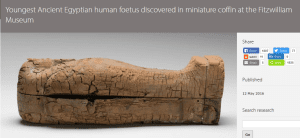
Youngest Ancient Egyptian human foetus discovered in miniature coffin at the Fitzwilliam Museum
Initially thought to contain mummified remains of internal organs removed during the embalming process, curators verified its contents as tiny human remains after running a CT scan in preparation for a special exhibit in 2016. The image revealed hand, feet, and leg bones and that the arms are crossed.
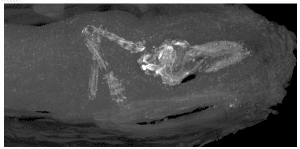
CT image of the miniature coffin
The Fitzwilliam Museum’s best guess is that these are the remains of a child lost in the womb. From the article: “Julie Dawson, Head of Conservation at the Fitzwilliam Museum said, ‘Using non-invasive modern technology to investigate this extraordinary archaeological find has provided us with striking evidence of how an unborn child might be viewed in ancient Egyptian society. The care taken in the preparation of this burial clearly demonstrates the value placed on life even in the first weeks of its inception.’ This find is not the only mummified remains of miscarried children, for there are two small coffins in Tutankhamun’s tomb with remains from about 25 and 37 weeks of gestation. Beyond that, there are few similar burials from Egypt.
Though we cannot draw broad conclusions from so few examples, nor can we extrapolate the story behind these tiny remains, how each pregnancy ended, nor the reason they received burial rites, we can say that preparing the tiny coffin with its painstaking decorations took time. Did the process serve as an outlet for grief and an avenue for remembrance? Perhaps. Did knowing the tiny remains were properly and ritualistically buried help assuage grief over the loss? It’s hard to say. I have friends who have chosen to remember their miscarried children with a cemetery burial in rituals presided over by a priest, so it’s certainly possible.
I found another example of a ritual of remembrance in Lisa Sousa’s book, The Woman Who Turned Into a Jaguar and Other Narratives of Native Women in Archives of Colonial Mexico. In her chapter on the household and the community, she discusses little houses or altars in colonial Mexico as sacred spaces, a Christianization of the devotion shown to Mesoamerican deities. Referred to as an oratorio (oratory or chapel), a casa (house), or a santocalli (saint-house), these spaces provided a home for the household saints, as well as a place to gather, drink, and perform indigenous-Christian rituals. Evidence from colonial last wills and testaments suggest that the saint’s house offered a place to perform funerary rites. Sousa cites one case of a family who, in 1757 Malinalco in central Mexico, laid out a stillborn baby in the santocalli, where the community assisted in preparing the remains for a church burial. This is another example of burying the remains of a child lost in pregnancy…. Even so, I have chosen not to bury the remains of my lost child, as of yet, because it doesn’t feel right for me.
We all mourn loved ones lost. As we move from Thanksgiving to the New Year, it’s common to miss those who no longer gather with us around the Christmas tree. My post is a little reminder that some families have a more hidden sorrow, for they mourn the presence of someone who never had the opportunity to gather around the Christmas tree.



